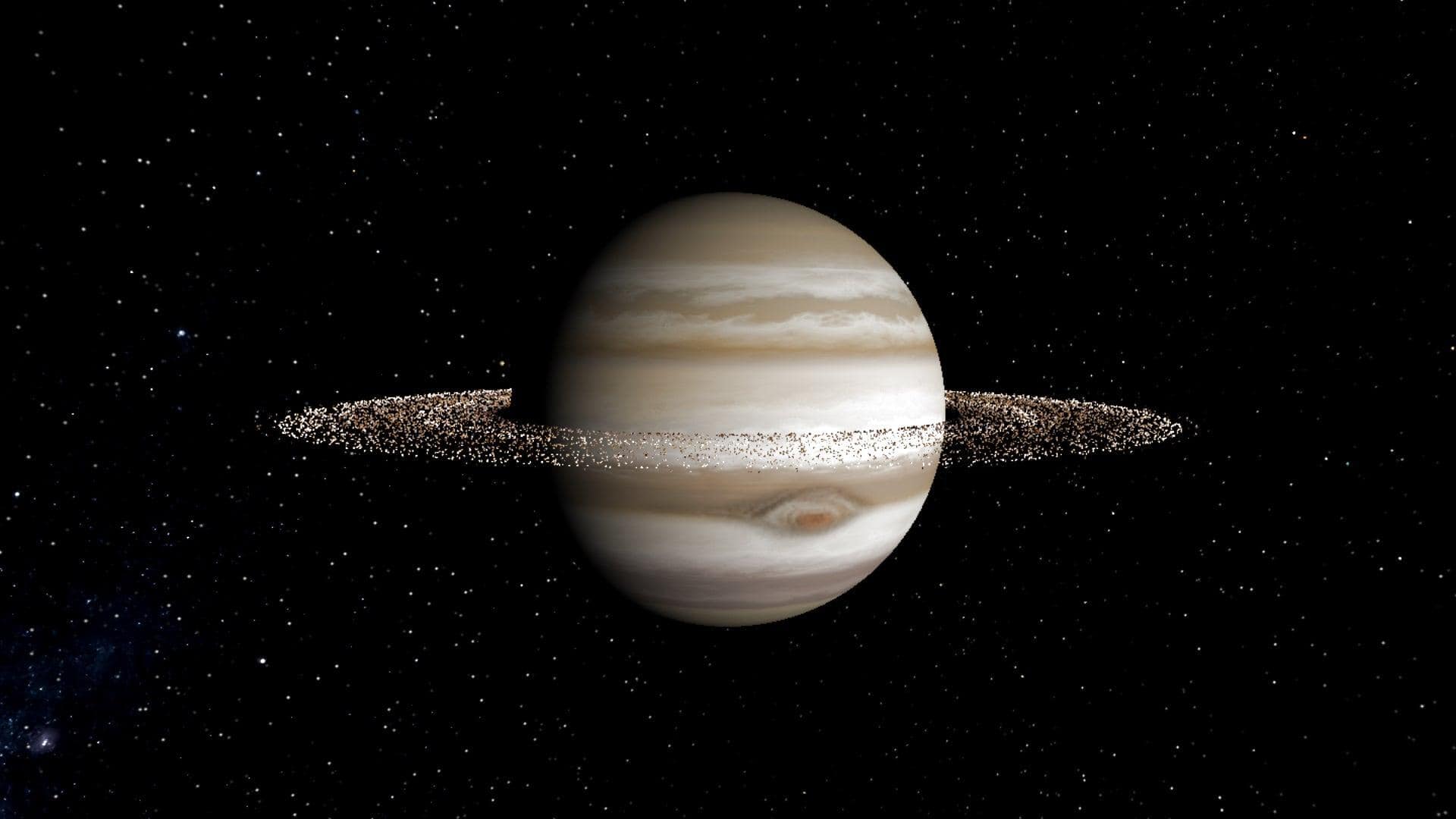
Jupiter was once twice its size. Then it shrank
What's the story
Jupiter, already the largest planet in our solar system at over 143,000 kilometers wide, was once more than twice its current size, astronomers say. Its magnetic field may have been 50 times stronger during this early phase. These revelations come from a new study analyzing the orbits of Jupiter's smallest inner moons. Published on Tuesday in Nature Astronomy, the research suggests Jupiter's immense early form played a critical role in shaping the structure and evolution of our solar system.
Moons's orbits
Study of Jupiter's tiny moons reveals secrets
To learn more about the early days of Jupiter's formation, the researchers examined Almathea and Thebe, two of the planet's smallest moons. Almathea orbits Jupiter on a slightly tilted path about 181,000km above its cloud tops, while Thebe orbits at about 222,000km. By studying these orbital variations and factoring in the conservation of angular momentum within Jupiter, they estimated its size and internal structure about 3.8 million years after our solar system started forming its first solid bodies.
Early Jupiter
Jupiter's early size and magnetic field strength
The study indicates that early Jupiter was 2-2.5 times bigger than its current size, with a much stronger magnetic field. Fred Adams, co-author of the study and University of Michigan professor of physics and astronomy, was amazed that they could reconstruct Jupiter's physical state after 4.5 billion years. The team's method helped them bypass many uncertainties typically involved in planetary formation models, improving our knowledge not just of Jupiter but other gas giants orbiting stars.
Formation insights
Understanding planet formation and solar system evolution
Konstantin Batygin, a Caltech planetary science professor and co-author of the study, stressed that knowing how planets form in the first place is key to cracking this puzzle. He said these findings bring us closer to knowing how not just Jupiter, but the whole solar system came to be. The research could also offer valuable insights into the evolution of other giant planets in other star systems.
Cooling down
Why did Jupiter shrink so much?
Jupiter formed early by building a massive core of rock and ice, then rapidly pulling in gas from the surrounding protoplanetary disk. During this phase, intense heat and energy from accretion caused its atmosphere to expand, making the planet hot and bloated. As gas inflow ceased and Jupiter radiated away its heat, it cooled down. This cooling allowed gravity to compress the gas more tightly, leading Jupiter to contract to its present size over millions of years.